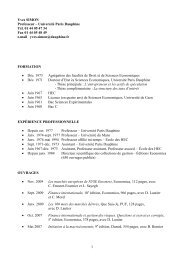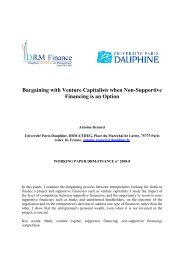Corporate governance and earnings management ... - CEREG
Corporate governance and earnings management ... - CEREG
Corporate governance and earnings management ... - CEREG
Create successful ePaper yourself
Turn your PDF publications into a flip-book with our unique Google optimized e-Paper software.
view which conducts to massive losses at the beginning of the investment cycle <strong>and</strong> even<br />
better than the dynamic view that reduces the <strong>earnings</strong> all along the cycle (Richard, 2004a,<br />
2004b).<br />
Pooling was a good solution for the sake of results but not a good one for the sake of<br />
balance sheet: it created “hidden reserves” (Johnson & Petrone, 2001, p. 101) which was<br />
problematic in a context where firms will show their “strength” to their shareholders.<br />
Furthermore it has a very bad reputation <strong>and</strong> prevented the comparability of results (Johnson<br />
& Yokley, 1997; FASB, 1998, 1999; Johnson, 1999, p. 80). The new solution was optimal in<br />
the sense that it offered nearly all the advantages of pooling without its defaults.<br />
It is interesting to note that globally this solution was judged to be a good one by the<br />
“elites” of the four countries at that time (see below).<br />
4.2. U.S.A.<br />
A fundamental question here is to underst<strong>and</strong> why the US was the first to refute the static<br />
solution (in a pure or even in a moderate way) <strong>and</strong> adopting first the dynamic solution then<br />
switching to the actuarial one <strong>and</strong> why it took so long to the other countries to discover the<br />
merits of these “modern” solutions.<br />
As far as the US are concerned our study is in line with recent works of economists<br />
especially those of Lazonick <strong>and</strong> Sullivan (LS in the rest if paper) (2000) <strong>and</strong> Aglietta <strong>and</strong><br />
Rébérioux (AR in the rest of the paper) (2004). These authors have shown that “corporate<br />
<strong>governance</strong> for most US corporations from their emergence in the late nineteenth <strong>and</strong> early<br />
twentieth century through the 1970s was based on the strategy of retain <strong>and</strong> reinvest” (LS, p.<br />
24). They have also shown that during all this period the pressure of professional stock market<br />
investors was very low (LS, p. 31) <strong>and</strong> that “top managers tended to be integrated with the<br />
business organizations that employed them” (LS, p. 24) which means that the power was<br />
generally, in the h<strong>and</strong>s of block shareholders <strong>and</strong> banks. The merit of our study if any is to<br />
show that this strategy of retain <strong>and</strong> reinvest has been nevertheless declining as far as the<br />
60



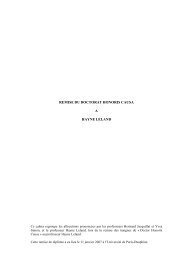

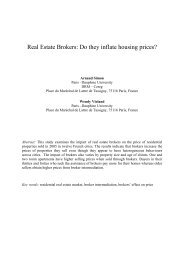
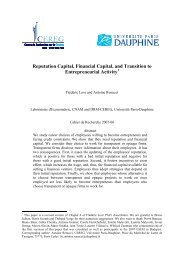

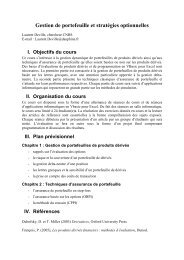



![& 6 ] ^ F ]^ - CEREG - Université Paris-Dauphine](https://img.yumpu.com/33326502/1/184x260/-6-f-cereg-universitac-paris-dauphine.jpg?quality=85)

